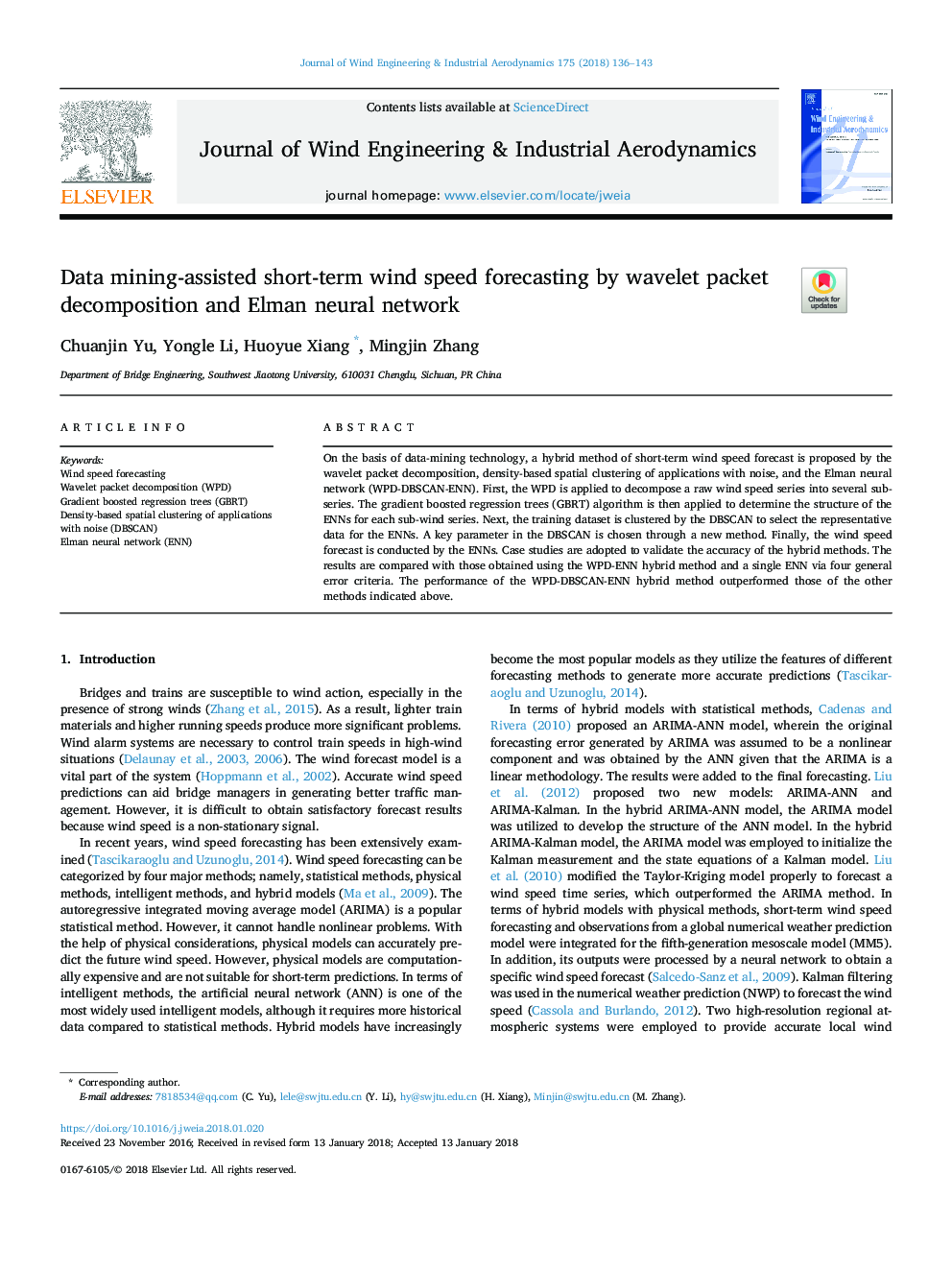| Article ID | Journal | Published Year | Pages | File Type |
|---|---|---|---|---|
| 6756960 | Journal of Wind Engineering and Industrial Aerodynamics | 2018 | 8 Pages |
Abstract
On the basis of data-mining technology, a hybrid method of short-term wind speed forecast is proposed by the wavelet packet decomposition, density-based spatial clustering of applications with noise, and the Elman neural network (WPD-DBSCAN-ENN). First, the WPD is applied to decompose a raw wind speed series into several sub-series. The gradient boosted regression trees (GBRT) algorithm is then applied to determine the structure of the ENNs for each sub-wind series. Next, the training dataset is clustered by the DBSCAN to select the representative data for the ENNs. A key parameter in the DBSCAN is chosen through a new method. Finally, the wind speed forecast is conducted by the ENNs. Case studies are adopted to validate the accuracy of the hybrid methods. The results are compared with those obtained using the WPD-ENN hybrid method and a single ENN via four general error criteria. The performance of the WPD-DBSCAN-ENN hybrid method outperformed those of the other methods indicated above.
Related Topics
Physical Sciences and Engineering
Energy
Renewable Energy, Sustainability and the Environment
Authors
Chuanjin Yu, Yongle Li, Huoyue Xiang, Mingjin Zhang,
